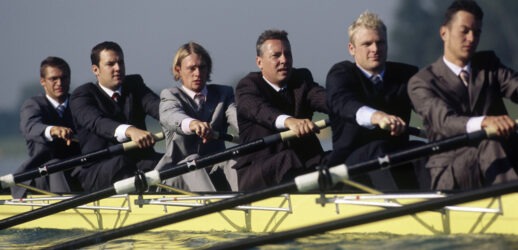55 planners share secrets for planning, promoting and measuring transformational experiences
Event professionals have long had to fill a company directory of job titles, from CMO and CFO to CGP (chief garbage picker-upper) and occasionally, therapist. But today’s planner is almost always also required to also grasp the role of technology for improving meetings.
We asked 55 veteran planners about the high- and low-tech tools that allow them to continue to love their jobs while delivering memorable experiences. The answers ranged from deeply technical and insightful to experimental and desperate. Hopefully these responses will inspire you to try a new trick or add a tool to your belt.
Gotta Have It
It seems ironic, but the most high-touch activity imaginable, meeting face to face, is now a high-tech business. More than 72 percent of respondents to a Smart Meetings survey said they couldn’t do their job without new event technology. And planners are embracing the opportunities by adopting emerging solutions to bring people together. Fewer than 4 percent of respondents said that it made their jobs more difficult.
The tech tools most frequently cited in the survey include mobile apps, automated registration tied to CRM databases and on-site badge printing. In fact, the integration of those three things is creating an end-to-end experience that is revolutionizing expectations for how events are managed.
Combining the mobile app with location tracking and surveying has become another valuable way to improve the event experience. If the app knows that an attendee is in a specific session, it can send a survey with specific questions about the speaker and content in the final minutes so that the presenter can prod attendees to give feedback even before they get up from their seats. What’s more, if attendees leave a session early, their badge can relay that information so that the event app can send a note asking, “Did the session deliver what you wanted?” This way, the planner can get accurate feedback in real time. It eliminates guessing and jumping to conclusions, and allows the planner to adjust future events so they are more relevant.
Technology can be the differentiator for planners looking to set themselves apart from the competition. Even for a group seen as hyper-tactile, the International Senior Softball Association, technology is an essential tool. Deputy executive directors Greg Thomas and Sara Van Hook were of one mind when they explained that what sets them apart is using scheduling software with the ability to post game results immediately following the last out.
Technology can also provide that “wow” factor. Cindy Elena Rodriguez, corporate programs and events specialist at Citgo Petroleum in Houston, suggests doing the unthinkable: “Have a robot co-emcee an event.” It will almost surely get people talking.
But woe to the planner who gets it wrong. As Shane Edmonds, chief technology officer at etouches explains, “If people’s first impression of your event is waiting in line, you’ve made a mistake.” Self-service badge printing saves attendees time, saves planners money on staffing (although many respondents stressed the importance of having staff on hand for trouble-shooting and messaging) and enhances personalization options, as suggested agendas and messages can be included on the badge. Soon, facial recognition and “smart city” hotel, airport and train station registration will be common. The system can even notify planners immediately when VIPs arrive so they can get a little extra TLC.
Buzz Essentials
Social media optimization is now as much a part of conferences as gift bags. A clever online strategy can energize attendees to post selfies from the expo floor and leave colleagues with such an intense case of FOMO (fear of missing out) that they will make it a priority to be onsite next year. But buzz doesn’t happen by itself. Planners have embraced a wide array of tools for creating excitement before, during and after an event.
At PCMA Convening Leaders in Nashville in January, the 4,500 attendees were joined by another 1,500 from all over the world who watched from their home computers and smartphones in real time, or at watch parties when the event was rebroadcast during Asia’s prime time. While the high-definition recording and war room-style facilities required some sophisticated logistics, new PCMA CEO and President Sheriff Karamat explained that one of the roles of the conference is to take chances and model new ideas for members that are scalable. In fact, one of the education sessions at the event focused on best practices for Facebook Live streaming, which can be done with nothing more technical than a smartphone, a social media account and a media strategy.
The greatest tool for building excitement about an event, according to many survey respondents, is the people sitting in the seats in front of the main stage. Sofia Svennberg, sales executive for external events at Stockholm-based Artexis, suggested working a well-considered marker into all parts of the environment. “Build the hashtag into the decor,” she suggests. Plastering it on badges, schedules and PowerPoint presentation templates can act as gentle reminders to people to snap and post early and often.
Social media has become a sophisticated endeavor, and many respondents advised hiring full-time professionals to develop strategies, manage posts and measure results. Experts can help guide an understanding of specific audience preferences. Some demographic groups will use only Snapchat, while others feel more comfortable on Instagram or don’t go online at all. It is important to talk to them where they live digitally and speak the specific language of that platform.
Elizabeth Bennett, director of special events at Saint Barnabas Medical Center in Livingston, New Jersey, suggests using pictures in social media posts and telling the stories of people impacted by your organization’s work. “Always remember that people, in the end, just want to have fun,” she says.
The trick is to make sharing easy. Include social media sharing options in photo booths, and create quick videos on-site that people can tag, like and share. And then there is always the oldest trick in the book—bribe them. Jennifer Mac Kay, executive director at New York-based International Foodservice Editorial Council, says raffles and contests for those who do the most posting are dependable ways to increase mentions exponentially, for the price of a hotel drink ticket.
Engagement Tricks
For all the discussion about designing experiences these days, some of the most effective strategies require going back to the basics, even if they incorporate emerging technology tools. Angela McMillan, director of special events, communication and marketing for Greater Kalamazoo Association of Realtors, suggests asking attendees what they want, and delivering on that. While the question can come in the form of a digital survey, behavior tracking or an old-fashioned phone call, the message that you are listening to needs to be delivered clearly. McMillan makes it a priority to consider all five senses when creating an event experience. “Walk through the space as an attendee, with the user experience as the focus,” she advises.
When the team at Salesforce plans their annual Dreamforce Convention for 170,000 people in San Francisco each November, they think outside the industry. Julie Liegl, senior vice president of strategic events for Salesforce, says she takes clues from things outside of the tech-events world. “We have been inspired by Disneyland, the Super Bowl and even rock concerts,” she says. “We believe the entire event should be a magical experience, from registration to strolling around the show floor.” At one event, her team shut down a major downtown street and turned it into a space that was part national park, part carnival and part cafe. She is challenged to raise the bar for each event and stay two to three steps ahead of what everyone else is doing.
“Festivalization” of conferences, including concerts with big name bands and associated VIP experiences, has become more popular in the last few years. One respondent has this tip: “Keep attendees entertained so they learn accidentally.” Bonus points if the entertainment goes above and beyond what was expected.
Another emerging trend, gamification, which draws on the compelling psychological fun of turning an event into a competition, is seen as a powerful way to help attendees feel they have a stake in what happens. But successfully pulling it off requires developing a thorough understanding of what you and your attendees want out of the experience, and developing an activity that meets those goals—whether they are focused on education, team building or networking. At the same time, respondents stressed the importance of keeping it simple and fun. It is called a game, after all.
Many of the top planner secrets shared fall into the category of good, old-fashioned customer service. “Make each person feel like they are the most important person in the room,” says one respondent.
Another way to make attendees the focus is to make them part of the presentation. Scheduling time for peer-to-peer learning and sharing is a great way to keep people involved and leverage the collected skills of your audience. Catchbox microphones help promote robust question-and-answer sessions and make attendees integral to the show.
Success Measurements
After all that work, how do you know if you won over hearts and minds? The level of sophistication in the tools used by respondents varied, but the end goal is the same—listening. Whether you are using your ears, digital surveys, attendance statistics (is bigger always better?) or sponsor feedback, the important thing is that you have some benchmark based on your original objectives to see if your efforts are working.
To bump up survey response rates, some planners suggest offering presentations and white papers, or discounts for the following year’s ticket in exchange for filling out surveys.
Debbie Antrim, senior director of meetings and events at Indianapolis-based technology association CEDIA, suggests using a net promoter score model based on the question, “Would you recommend this event to a friend or colleague?” That can be a much easier question in context to answer than the generic, “Did you like the conference?”
At the end of the closing session, a lot of planners are still trying to figure out the optimum metrics. One person responded, “God, I need one,” in response to the question, “What is your plan for measuring success?” So, planners still looking for the best way to report on ROI are not alone.
Bobbie Carlton, founder of Innovation Nights and Innovation Women, measures everything: RSVPs, attendees, Tweets, posts, connections. But her top secret is tenacity. “Just keep on doing what you do,” she counsels. She takes her own advice. She is currently on an uninterrupted run of 106 monthly events.





